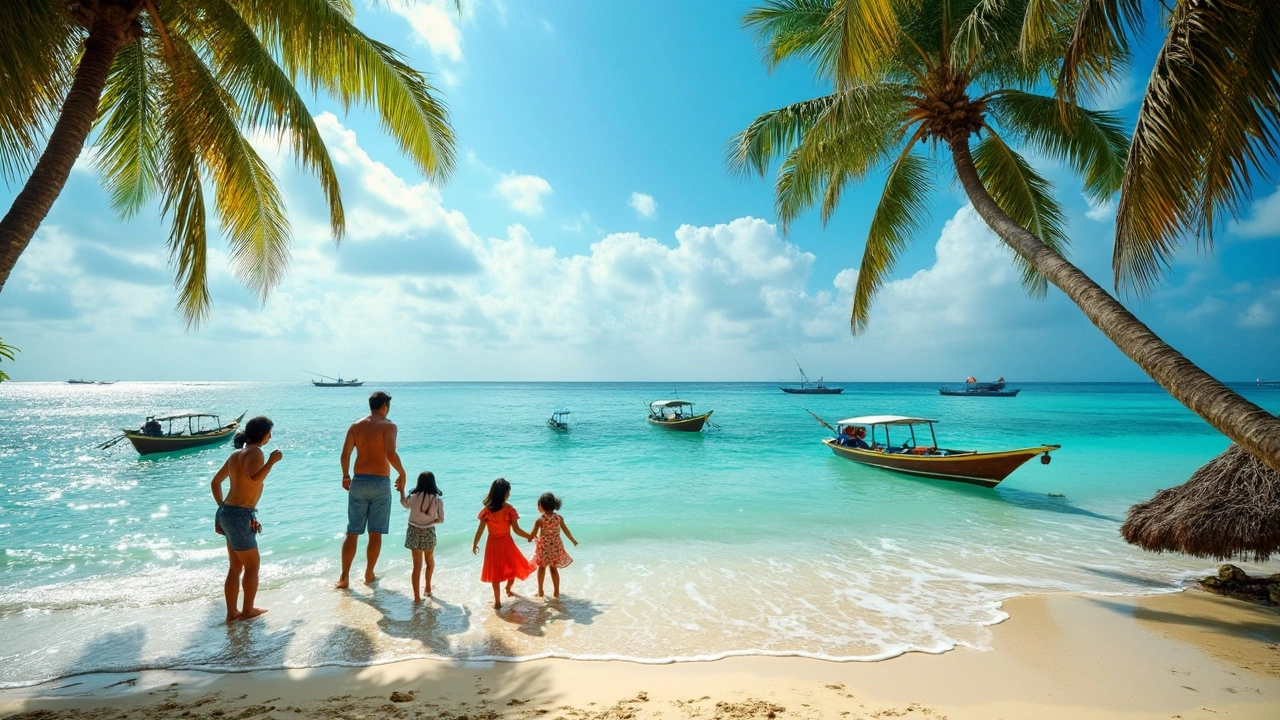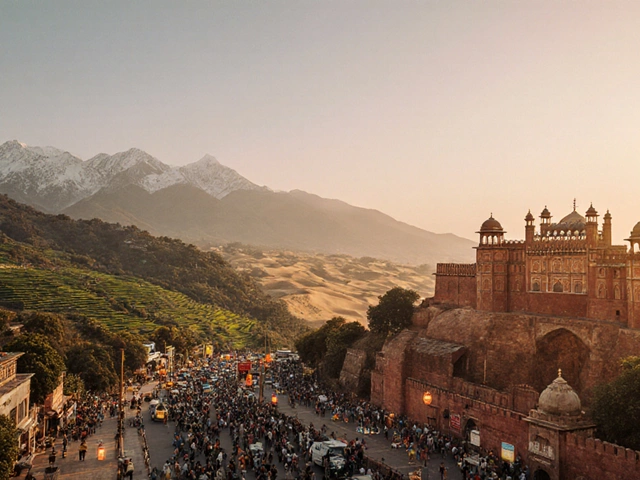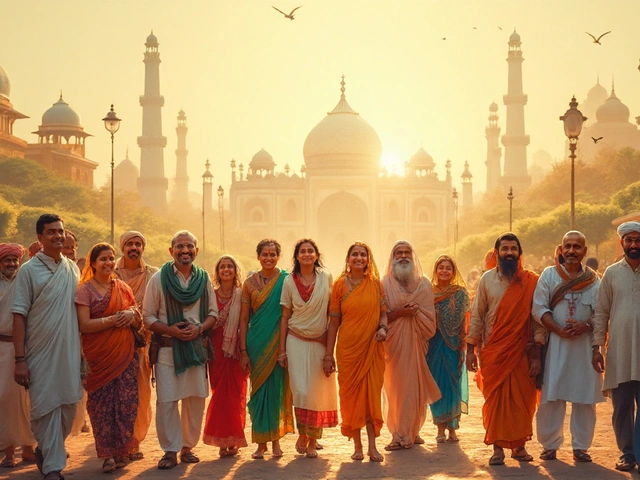If you’re searching for a beach in India where the water is so clear you could spot a seashell on the bottom without squinting, you’re not alone. Most folks think of Goa first, but if you’re chasing genuine clarity, your answer lies farther east—in the Andaman Islands. The winner, hands down: Radhanagar Beach on Havelock Island (now called Swaraj Dweep).
Radhanagar isn’t just Instagram-famous. Loads of travelers and even National Geographic got eyes on its powdery white sand and turquoise surf. The water here looks almost unreal, especially in the early morning when hardly anyone is around.
That clarity comes from a lucky combo: minimal nearby settlements, no major rivers dumping silt, and a strict policy against littering—both from locals and tourists. Plus, you don’t get wild currents stirring up the sand like you do on India’s mainland beaches.
- Top Contenders for Clearest Water
- Why Some Beaches Stay So Clear
- The Best Time and How to Get There
- Useful Tips for Your Visit
Top Contenders for Clearest Water
If you’re talking about the clearest water in India, Radhanagar Beach on Havelock Island pretty much steals the show. This spot often makes the cut in international “best beaches” lists, and trust me, the hype is real. The water is outrageously clear, mostly calm, and it’s rare to see floating trash here. You can see tropical fish darting around even if you’re just knee-deep. That’s how good it gets.
But Radhanagar isn’t alone. Neil Island, just next door, has Laxmanpur Beach, which is known for its clean blue-green water and killer sunset views. It’s less crowded than Radhanagar, so if you like some peace, it’s a solid backup. There’s also Bharatpur Beach on Neil, which is ideal if you want to snorkel or rent a glass-bottom boat—visibility is top-notch, sometimes up to ten meters on a good day.
If you want something on the mainland, check out Bangaram Island in Lakshadweep. Getting there takes a bit more work because you need permits, but the payoff is wild: hardly any people, teal water, and coral you can see without dunking your head. Just be warned—it’s more of a proper getaway and less of a day-trip vibe.
Goa and Kerala’s big sandy beaches are famous, but if clear water is your mission, they can’t beat the Andamans or Lakshadweep. Even in places like Gokarna, the water is nice, but not that see-through swimming pool stuff you’re after. Stick to these island picks if you want that dreamy, crystal-clear effect.
Why Some Beaches Stay So Clear
Not all beaches get to brag about see-through water. Only a handful have that level of clarity, and it’s not just luck. It’s all about a few key factors working together, and understanding these can make your next beach trip a whole lot better.
The first big reason is the water’s source. Beaches far from big rivers tend to win the clarity game. That’s because rivers bring in silt and mud, which clouds the water. For example, Havelock’s Radhanagar Beach is far from any major river mouths. Instead, it faces open sea, so there’s almost nothing dropping muck into the water.
Another reason is how the beach is managed. The Andamans have strict rules about waste and plastic, and locals make a real effort to keep things clean. There are hefty fines for littering, and you’ll notice barely any trash on these shores. Just compare that to crowded mainland spots where plastic and food wrappers are way too common.
Wave action and tides also play a role. Strong waves can stir up sand and cloud the water, but beaches like Radhanagar have pretty chill waves most of the year. That keeps particles settled at the bottom instead of floating around. Nearby reefs act as natural barriers, cutting down on wave power.
Here’s a quick breakdown of what keeps water clear in these top spots:
- No nearby rivers bringing in soil
- Strict anti-litter rules with actual enforcement
- Fewer tourists compared to mainland hotspots
- Coral reefs buffering waves
- Minimal boat and fishing traffic
Just check out this simple table comparing main factors at a few Indian beaches:
| Beach | Nearby Rivers | Tourist Numbers | Reef Barrier | Water Clarity (1=Cloudy, 5=Crystal) |
|---|---|---|---|---|
| Radhanagar Beach | No | Low/Moderate | Yes | 5 |
| Palolem (Goa) | Yes | High | No | 3 |
| Varkala (Kerala) | Yes | Moderate | No | 2 |
| Agatti (Lakshadweep) | No | Low | Yes | 5 |
So if you’re hunting for the clearest water around India, skip spots close to big rivers or cities. Make a beeline for beaches protected by reefs, with rules that locals and tourists actually follow. You’ll see the difference the second your toes hit the water.

The Best Time and How to Get There
Nobody likes showing up for a beach day only to find rain clouds or rough seas messing up the vibe. If you’re heading to Radhanagar Beach, aim for the dry season from November to early May. The skies stay clear, and the water looks like a glass of blue Gatorade. Avoid June to September unless you want your trip drenched by monsoon storms.
| Month | Weather | Crowds |
|---|---|---|
| November - February | Cool, dry, perfect water | Medium |
| March - May | Warm, sunny, clear water | Low to Medium |
| June - September | Rainy, rough sea | Low |
| October | Mixed, possible showers | Low |
Now, getting there isn’t a quick hop. You’ve gotta first reach Port Blair, which is the capital city of the Andaman and Nicobar Islands. Direct flights run from Chennai, Kolkata, Delhi, and a few other metros. Airlines like IndiGo, Air India, and Vistara serve Port Blair daily. From there, you catch a ferry to Havelock Island (Swaraj Dweep). Ferries usually take 1.5 to 2.5 hours and the government ones are pretty reliable, but private operators like Makruzz or Green Ocean are comfier.
- Clearest water is top on everyone’s wish list, but don’t cut corners on timing—the water is insanely clear only outside monsoon season.
- Book ferry tickets in advance, especially if you’re visiting December to March. Seats fill up quick.
- Once you land on Havelock, you’ll find taxis, rented scooters, and auto-rickshaws at the jetty. Radhanagar Beach is about 10 km from there, and roads are simple to follow.
Pro tip: Early morning ferries give you the cleanest sea views and less heat. And pack light—luggage rules can be strict on some ferries.
Useful Tips for Your Visit
So you’re ready to hit Radhanagar Beach for that perfect, clear-water experience? Great move. But don’t just wing it—getting the most out of this spot takes a bit of planning. Here’s how you can make sure your trip’s smooth and memorable.
- Book ferry tickets in advance. The government and private ferries from Port Blair to Havelock Island get full, especially in peak season (December to March). Don’t wait till you reach there—tickets can run out fast.
- Leave plastics at your hotel. Havelock has strict anti-plastic rules. Bring a reusable water bottle and eco-bags. You’ll avoid fines, and the beach stays how you want to see it: spotless.
- Visit either early in the morning or just before sunset. Not only do you miss the crowds, but the ocean’s color is insanely clear at these times. If you want those “are-you-kidding-me?” photos, it’s your best shot.
- Phones often lose signal here. Download maps for offline use, and save key info before arrival. It won’t hurt to carry some cash, as ATMs are limited and card payments are hit or miss.
- Swimming is safest from October to April—monsoon months (May to September) bring stronger currents and murkier water.
For gear, here’s what’s worth packing:
- Easy-dry clothes and swimwear: humidity hits hard, and stuff barely dries without the sun.
- Reef-safe sunscreen: Indian authorities want you to avoid stuff that hurts the marine life. Regular sunscreen isn’t cool for the water here.
- Flip-flops or sandals: There’s no reason to drag sneakers across sand.
- Cheap waterproof phone pouch: Saltwater + phones = regret. You’ll want to shoot the clearest water, but not dunk your phone.
If you’re hungry, you’ll find basic food shacks just outside the beach gates. Most serve coconut water, snacks, and fish curries—but nothing fancy. Bring your own snacks if you’re picky or traveling with kids.
Here’s a quick stat breakdown for those who want the numbers:
| Category | Details |
|---|---|
| Best Months to Visit | December to March |
| Distance from Port Blair | 57 km (by sea) |
| Entry Fee | None |
| Water Quality Rating (2023) | Excellent (based on local tourism board data) |
| Mobile Network | Very limited (mostly BSNL) |
The clear water at Radhanagar Beach might look untouched, but that’s because everyone chips in to keep it that way. Stick to the basics, respect the local rules, and you’ll get the chill, clean beach vibe you came for. Oh, and don’t forget: if you want to look up other clearest water beaches, give Neil Island (now Shaheed Dweep) a try while you’re nearby!



